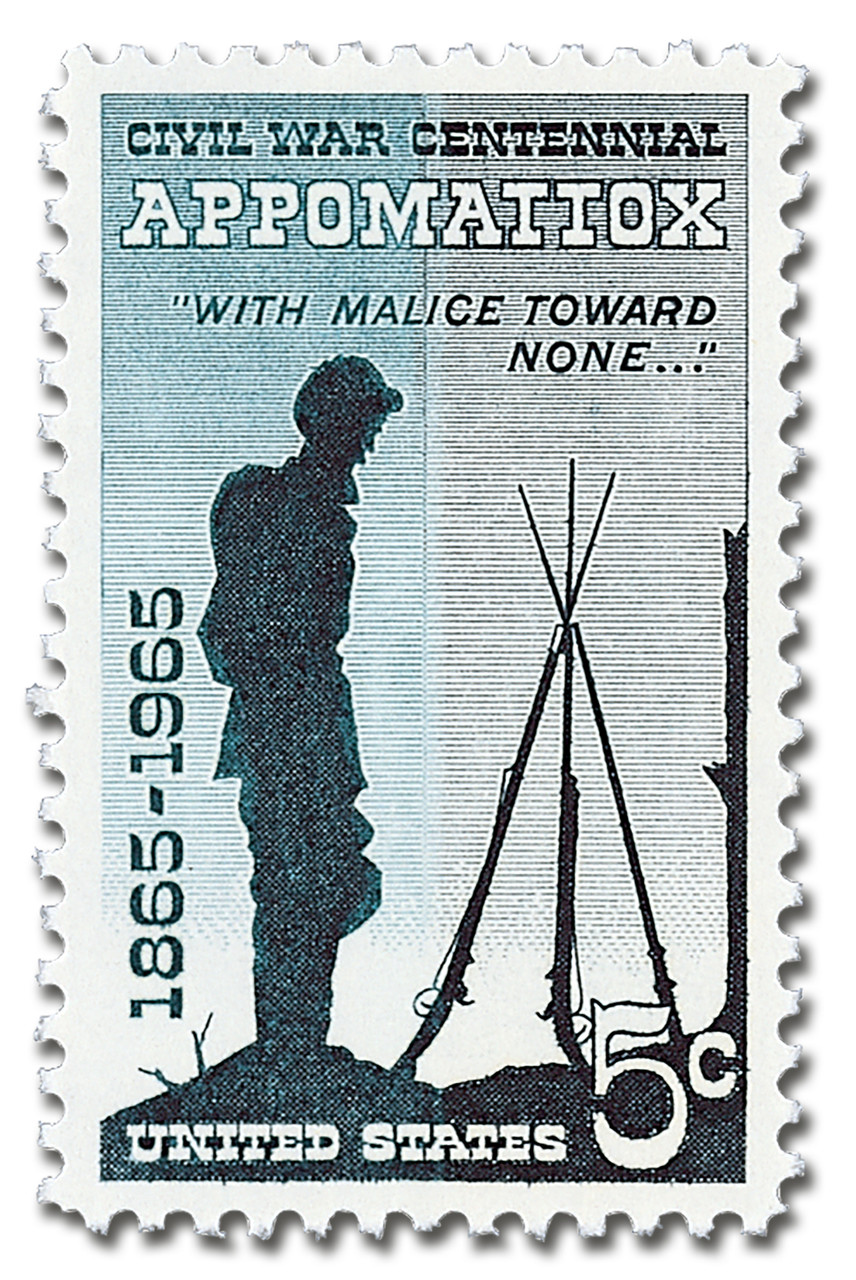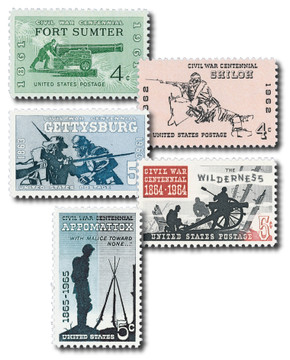
U.S. #1182
5¢ Appomattox
Civil War Centennial Series
Issue Date: April 9, 1965
City: Appomattox, VA
Printed By: Bureau of Engraving and Printing
Printing Method: Giori press
Perforations: 11
Quantity: 112,845,000
Color: Prussian blue and black
On April 9, 1865, Robert E. Lee surrendered his Army of Northern... more
U.S. #1182
5¢ Appomattox
Civil War Centennial Series
Issue Date: April 9, 1965
City: Appomattox, VA
Printed By: Bureau of Engraving and Printing
Printing Method: Giori press
Perforations: 11
Quantity: 112,845,000
Color: Prussian blue and black
On April 9, 1865, Robert E. Lee surrendered his Army of Northern Virginia to Ulysses S. Grant, effectively ending the Civil War.











